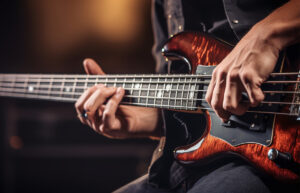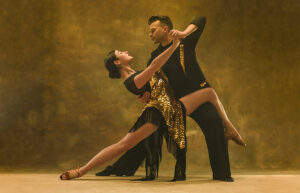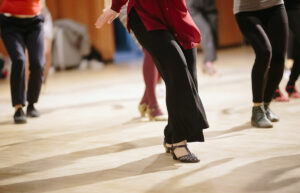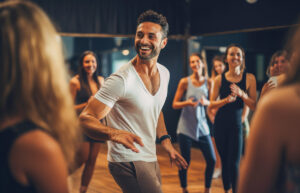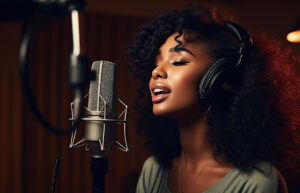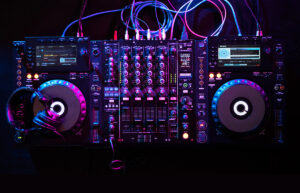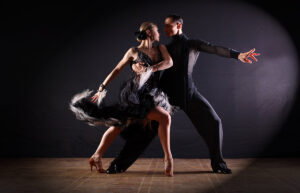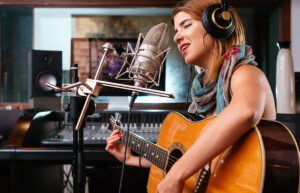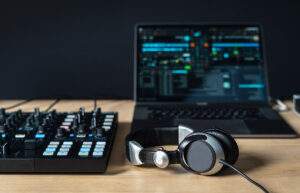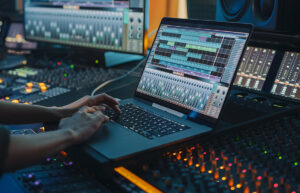How To Do a Voiceover: Meaning, Types, Elements, Steps & Equipments

In multimedia, voiceovers are pivotal in bringing life to content and engaging audiences. But how to do a voiceover? What does it take to deliver a compelling voiceover? In this guide, we’ll demystify the art of voiceover. We’ll explore its meaning, delve into its various types, and discuss the essential elements and equipment needed.
Welcome to TheDemoStop, now join the community!
Connect with artists, fans and producers around the world.
What is voiceover?
Voiceover is a production technique where you record spoken narration or dialogue without showing the speaker on screen. It’s used in many types of media like movies, TV shows, ads, documentaries, video games, animations, and audiobooks.
Voiceover is usually done by a voice actor in a studio using professional recording gear. Later, the recorded audio is matched up with the visuals or content during editing.
What is the purpose of a voiceover?
Narration
Voiceover in narration provides context, weaves a story, or offers insights, ensuring the audience stays engaged and informed with the correct information at the right time.
Commercial
Voiceover in commercials helps attract the target audience’s attention by projecting the right tone and emotions while delivering the advertising message. It can enhance marketing efforts and connect with the audience more deeply.
Training and education
In eLearning, voiceovers serve as an unseen guide, providing context, building emotion, and deepening understanding for the audience. They can enhance knowledge retention, making eLearning videos, tutorials, and modules more engaging and relatable.
News reporting and documentaries
Voiceover in documentaries aims to connect the audience with the narrative by providing essential information, context, and insights. It adds depth and emotional resonance to the story.
Animation and video games
Voiceover artists often devote time and effort to mastering how to do a voiceover in animation, breathing life into characters. This skillful craft not only animates characters but also infuses them with a sense of humanity, making them relatable to audiences on a deeper level.
Audiobooks
Voiceover in audiobooks requires skilled narration to bring characters to life, convey emotions, and maintain the listener’s engagement throughout the recording. It’s a popular format for consuming books, offering convenience and the ability to enjoy literature while multitasking or on the go.
Types of voiceovers
Before delving into the intricacies of “How to do a voiceover,” it’s crucial to understand the various types of voiceovers available.
Narration voiceovers
Narration provides context, weaves a story, or offers insights, ensuring the audience stays engaged and informed with the correct information at the right time. Here, the voiceover style requires a clear and articulate delivery and depends on the content; it can be informative, educational, or even dramatic.
Commercial voiceovers
How to do a voiceover that attracts the target audience’s attention? Commercials voiceovers project the right tone and emotions while delivering the advertising message. They enhance marketing efforts and connect with the audience on a deeper level. These should be engaging, persuasive, suited to the target audience, and may involve a conversational or authoritative tone.
IVR/voice prompts/telephony voiceovers
Interactive Voice Response (IVR) is an automated telephone system interacting with customer calls through recorded voice prompts and keypad inputs. In IVRs, the voiceover style is clear, concise, and friendly.
Animation and gaming voiceovers
Animation and gaming voiceovers bring characters to life, adding a touch of humanity that makes them more relatable. While gaming, the style varies based on the character’s personality and the overall tone of the project. Hence, it ranges from realistic to exaggerated and may involve creating unique voices for different characters.
Promos, affiliates, and trailers voiceovers
These voiceovers are used to promote products, ideas, services, and everything in between. A promotional video provides the first impression of your offering. The voiceover style in trailers is often dramatic, energetic, and attention-grabbing. The style aims to build anticipation and encourage the audience to take action, such as watching a movie or purchasing a product.
Elements of a good voiceover
Audio clarity and volume
- Clear Audio: Ensure the audio is clear. Fuzzy or muddy sounding will make it difficult for your audience to understand and may cause distraction.
- Appropriate volume: Maintain a consistent volume level throughout the recording. Avoid sudden spikes or drops in volume that can distract or confuse the listener.
Attention to details
- Emphasis on key points: Highlight important information by varying tone, pitch, or volume. This helps to guide the listener’s focus and emphasize essential messages.
- Expressiveness: Infuse emotion and personality into the voice to engage the audience. A monotone delivery can be dull, while a dynamic and expressive voice captures attention.
Welcome to TheDemoStop, now join the community!
Connect with artists, fans and producers around the world.
Good pronunciation
- Correct pronunciation: How to do a voiceover that is considered good? Pronounce words accurately and adhere to standard pronunciation rules. Mispronunciations can distract the listener and diminish the credibility of the voiceover.
- Cultural sensitivity: Be aware of cultural nuances and pronounce names, places, and terms in a way that respects cultural variations.
Pacing
- Appropriate speed: Pacing refers to the speed at which you speak or unfold a story. Maintain a pace that allows the listener to absorb the information comfortably. Avoid talking too fast or too slow, as both can impact comprehension.
- Pauses: Incorporate strategic pauses for information digestion and emphasize key points. Well-timed pauses can enhance the overall flow and impact of the voiceover.
Steps for recording a voiceover
Find a quiet place
To know how to do a voiceover, the first step is to select a quiet, controlled environment to ensure a clean, professional voiceover recording. Choose a room with minimal background noise, and if possible, use soft furnishings or blankets to dampen echoes. You can also consider using a closet or a basement for recording.
Choose a microphone
Invest in a professional microphone suitable for voice recording. Consider factors such as the type of microphone (condenser or dynamic), its sensitivity, and whether it is a USB or XLR connection when choosing the right microphone. Test different options to find the microphone that best suits your voice and recording environment.
Choose your audio software
There are many audio recording and editing software available. Opt for reliable audio recording software that matches your needs, skill level, and budget. Popular choices include Audacity, Adobe Audition, or Logic Pro. Familiarize yourself with the software’s interface, settings, and features before recording to streamline the process.
Do a test recording
In this process of how to do a voiceover, conduct a test recording to check equipment functionality and sound quality. This step allows you to identify and address any potential issues, such as background noise, microphone glitches, or unwanted echoes in the recording space. This step also helps you understand the volume, cadence, tone, and clarity of your voiceover recording.
Check your volume levels
Adjust and monitor your microphone and recording levels to ensure a balanced and clear sound. Avoid peaks that could lead to distortion, and ensure your voice remains audible without being too loud or too soft. Your goal should be to reach as high as possible while never peaking over 6 db (on your peak meter).
Record your voiceover
Once satisfied with your setup, begin the actual voiceover recording. Speak clearly, maintain a consistent tone, and pay attention to pacing. If mistakes occur, it’s often best to pause, backtrack, and continue from a suitable point to maintain a smooth and coherent recording.
Edit your audio
Use your chosen audio editing software to cut out unwanted sections, smooth transitions, and enhance overall audio quality. Add effects if necessary, but be cautious not to over-process, preserving a natural sound. You can also remove background noise from your audio with one click with the help of an AI audio cleaner.
Import your audio into your video editor
Once you have a polished and edited voiceover track, import it into your video editing software. Align the voiceover with the corresponding visuals, adjusting timing as needed.
Best equipment for voiceover
Microphones

Microphones are the primary tool for capturing your voice. There are two main types of microphones used in voiceover work: condenser microphones and dynamic microphones. Some good microphones are Audio-Technica AT2020, Rode NT-USB Mini, and Sony WH-1000XM4.
Preamp

The preamp (pre-amplifier) boosts the low-level microphone signals to a usable level before sending them to the recording device. A quality preamp ensures that the audio signal retains its integrity and remains free from unwanted noise, resulting in a clean and professional recording. Here are a few options: DBX 286s, Golden Age Project Pre73 JR, and RT Pro MPA II.
Headphones

They let you hear your performance in real time and make necessary adjustments. Good headphones provide a clear, balanced sound that helps you catch any issues with your delivery or the recording quality. Check out these options: Sony WH-XB910N, Sony WH-1000XM, and Bose Noise Canceling 700.
Microphone stand

This allows you to maintain a consistent distance and angle to the microphone, which helps ensure consistent sound quality. It also frees your hands and helps reduce handling noise. Some of the recommendations are On Stage MS7201B, Pyle Microphone Stand, and Auphonix Diameter.
Pop shields

Pop shields or pop filters are screens that are placed between you and the microphone. They help reduce plosive sounds (like “p” and “b” sounds) that can cause a burst of air to hit the microphone, resulting in a popping sound in the recording. Auphonix Diameter, Aokeo Professional, and Stedman Proscreen XL are some of the good ones in the market.
Welcome to TheDemoStop, now join the community!
Connect with artists, fans and producers around the world.
Conclusion
What is voiceover?
Voiceover refers to a production technique where a voice that is not part of the narrative or on-screen action is used to convey information to the audience.
What is the purpose of a voiceover?
- Narration
- Commercial
- Training and education
- News reporting and documentaries
- Animation and video games
- Audiobooks
Types of voiceovers
- Narration voiceovers
- Commercial voiceovers
- IVR/voice prompts/telephony
- Animation and gaming
- Promos, affiliates, and trailers
Elements of a good voiceover
- Audio clarity and volume
- Attention to details
- Consistency
- Good pronunciation
- Pacing
Steps for recording a voiceover
- Find a quiet place
- Choose a microphone
- Choose your audio software
- Do a test recording
- Check your volume levels
- Record your voice over
- Edit your audio
- Import your audio into your video editor
Best equipment for voiceover
- Microphones
- Preamp
- Headphones
- Microphone stand
- Pop shields
FAQs
What is voiceover?
Voiceover is a production method in which spoken narration or dialogue is recorded without visually depicting the speaker on screen. This technique finds application across a wide array of media formats, including films, television programs, advertisements, documentaries, and video games.
Why is a good voiceover important?
A good voiceover is essential to increase audience engagement, clear delivery of the message, and enhance the overall impact of the content.
What is the purpose of a voiceover?
- Narration
- Commercial
- Training and education
- News reporting and documentaries
- Animation and video games
- Audiobooks
What are the different types of voiceovers?
- Narration voiceovers
- Commercial voiceovers
- IVR/voice prompts/telephony
- Animation and gaming
- Promos, affiliates, and trailers
How to do a voiceover?
Here are a few steps to follow to do a voiceover:
- Find a quiet place
- Choose a microphone
- Choose your audio software
- Do a test recording
- Check your volume levels
- Record your voiceover
- Edit your audio
- Import your audio into your video editor
What are the elements of voiceover?
The elements of voiceover are:
- Audio clarity and volume
- Attention to detail
- Consistency
- Good pronunciation
- Pacing
How to record a voiceover?
To record a voiceover effectively, it’s essential to articulate your words clearly, maintain a steady tone throughout, and be mindful of your pacing. Should you make any mistakes, it’s advisable to pause, backtrack to a suitable point, and resume recording to ensure a seamless and coherent final product. This approach helps maintain the quality and professionalism of the voiceover recording.
Which equipment is best for voiceover?
Microphones play a critical role in voiceover work. In voiceover work, two primary types of microphones are commonly utilized: condenser microphones and dynamic microphones.






